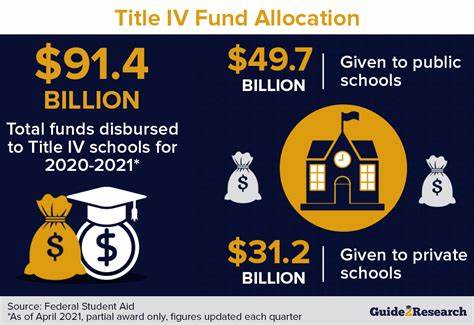
If you have not read part 1 of this article, Do Universities Really Care and Share What Happens to Students After College?, you may want to do so to learn about the efforts of colleges to voluntarily submit job placements rates. In brief, we learned that only 12.5% of colleges are currently choosing to submit their students’ placement data to the national career placement organization, of those who do, they are only collecting feedback on 58% of their graduates.
Linking Federal Funding to Reporting Placement

Would you believe me if I told you that there are hundreds of colleges ignoring a federal law that requires universities to provide job placement data? The law came from 2008, when the U.S. government updated the Higher Education Opportunity Act. They decided it was time for colleges to start documenting their job placement rates. Universities had until 2010 to begin doing this.
At the end of 2011, researchers surveyed 152 four-year private and public colleges and discovered that 20% of these colleges would not respond to both email and phone requests for this federally required data. For those colleges that had this data available, their assessments often included students’ reported “future plans” rather than actual post-graduation placement data. Other colleges only shared brochures and websites of a handful of graduates who were doing impressive things in their lives.

Now, over a decade later, the 2021 Federal Student Aid Handbook states clearly that “the school must provide information on the placement of, and types of employment obtained by, graduates of the school’s degree programs.” Should this information be inaccurate (which includes missing), “The Department of Education may initiate a fine, or a limitation, suspension, or termination of Title IV HEA eligibility for any substantial misrepresentation made by an institution regarding the employability of its graduates.” That gets my attention.
Compliance Challenges to Colleges Today
In 2022 I would expect to observe full university compliance to this federal law; especially when we remember that the federal government is currently giving universities over $150 billion dollars a year, and only 18 of the 4,000 degree-granting universities in the nation don’t receive any federal money (0.005%). Unfortunately, there are still plenty of universities not accurately meeting the stated expectations in this federal act.

Part of the challenge in complying with the federal requirement is that many colleges have not yet figured out how to collect accurate placement data on their graduates’ post college. For example, there are a number of colleges (Florida State and Swarthmore) that collect their placement data before or at graduation. Both of these colleges share “success” data but this projected data does not meet the actual definition of post-college engagement – in reality, they are asking their graduates to estimate what they will be doing by the end of the next six months.

Another challenge is that the U.S. government doesn’t state any minimum response rate of graduates from universities. In other words, if a college sends out a survey to their graduates and only 5% of the graduates respond, the data on those 5% of students would be the data used to document compliance. The government tries to offer some ideas for increasing response rates by stating “Colleges are permitted to use a variety of mechanisms for collecting this data including alumni or student satisfaction surveys or other relevant sources.”Colleges doing a great job of collecting this data sometimes use Linked In or other social media for better identifying graduates’ post-college results. These creative approaches to collecting results is why the term “response rate” is not preferred by NACE (the national career professionals’ organization). Instead, NACE uses the term “knowledge rate,” which means the percentage of graduates for which colleges have data.

A third challenge with post-graduation surveys is that almost all universities use email as their preferred mode of communication. This is a problem for today’s students. As far back as 2012 survey data was already showing that “texting is the dominant way teens communicate and e-mailing is practically nonexistent.” (All three of my kids, ranging from 12-20 years old, tell me never to email them or they won’t read it.) Attempting to reach a texting (or Snapchatting) generation by email is further complicated by knowing that once a student receives their diploma, the college no longer has any formal power over them. Furthermore, how likely is it that students who are embarrassed or depressed that they don’t have a job within six months of graduation are going to reply to an email from the school admitting this? Even though they are not alone, the social norms are that everyone is solidly employed post college.
Placement data, “makes comparing information across universities or for any group to speak on behalf of higher education communities literally impossible.”
The difficulty in reporting student post-graduation data has not gone unnoticed. For example, in a 2013 piece by Megan Rogers in Inside Higher Ed, she quotes the director Rochester Institute of Technology’s career office as saying that placement data, “makes comparing information across universities or for any group to speak on behalf of higher education communities literally impossible.” In a 2017 article by Mark Schneider in the Hechinger Report, he quotes the vice president of the American Institutes for Research and former commissioner of the National Center for Education Statistics as saying about the low response rates, “It’s a scandal. There’s no other word for it. At one time one could argue it was hard to get these numbers and you did the alumni surveys and if they worked in your favor, you published them, but there are so many other ways to get these numbers now.” These are just a couple examples of writers seeking to shed light on this previously hidden issue.
Federal Options for Locating Placement Data

Let’s say we want to find data on college outcomes for graduates. For starters, College Navigator, the website touted by many as the best source of data about colleges, is described by the U.S. government as a “consumer information tool designed to help students, parents, high school counselors, and others get information about over 7,000 postsecondary institutions in the U.S.” Unfortunately, the College Navigator section titled “student outcomes”, does not include placement data. That’s discouraging.

In 2013, the U.S. Government published another instrument with data from all the colleges in the U.S. called The College Scorecard, which “is different from College Navigator in that it’s focused on student outcomes after college to determine the value of a particular institution.” In short, if you want information on a college, College Navigator provides more data, but The College Scorecard focuses on outcomes like average salaries 10 years after graduation. One other benefit of the Scorecard’s data is that it includes students who attended the college on federal financial aid and were unable to finish. This is an often overlooked group of students who actually make up over 40% of the students who begin a 4-year college – that’s right, 4 out of 10 students who begin a 4-year college do not graduate. And yet, they too, more often than not, have loans to pay off, no degree to show for it, and are more likely going to be living in poverty than college graduates.
In short, what students (and families) need to know is that when they see a college advertising a job placement or career success rate, they should ask themselves (and the college) what that data is based upon. The fact is, if the data is not accompanied by an explanation of how it was collected and what the knowledge (~response) rate was, that university could be in violation of a federal law; which could ultimately compromise their ability to continue receiving the millions of dollars they receive each year. The federal law clearly states that with regards to their graduates post-college results, universities must “provide and certify the data is the most recent available, provide any other information necessary to substantiate the truthfulness of the information.” Sadly, based on the results following, I fear what would happen if we held colleges to this standard.
Preparing to Look at Placement Data (or Lack Thereof)
I wanted to know, in 2022, how many colleges are actually abiding by this requirement. I was surprised to find that way more colleges than I thought were either not following the law, or if they are following it, they are finding loopholes like not reporting response rates that can significantly mislead families. That being said, I have been around universities for almost all of my life (my father was a professor) and I am confident that any universities’ failure to accurately or even report the required data is not an attempt to willfully break the law. We don’t need any more conspiracy theories here. University staff are desperately trying to keep up with a public’s growing lack of trust.

For example, as of November 2021, the U.S. government currently has over 290 statutes with which colleges must show they are compliant. Almost all of these are from within the past 30 years. Most universities now have multiple compliance staff, if not entire departments, trying to stay up-to-date on these federal requirements in addition to laws from states, foundations, accrediting bodies, local governments, etc. Mistakes happen and they are quickly corrected most of the time. As we explore some specific institutional placement/success data, my goal is to bring more attention to what universities should be doing and I believe, once these universities realize this, they will comply. Losing federal financial for students would literally close almost any college in the U.S.

(In my next article, A Cursory Look at and Analysis of 25 Universities’ Placement/Success Data, we will study how 25 universities align with federal requirements.)

